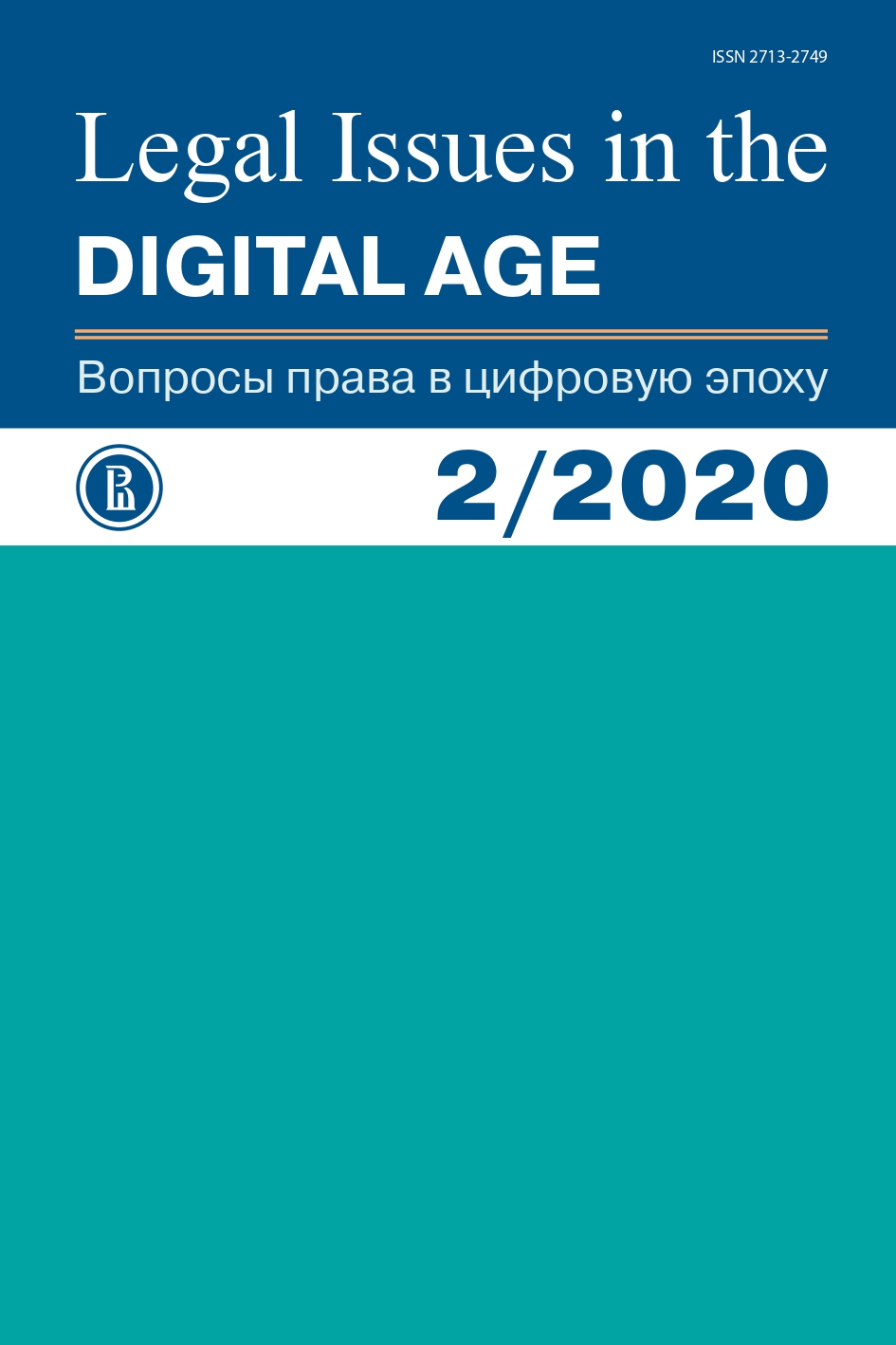When the Invented Becomes the Inventor: Can, and Should AI Systems be Granted Inventorship Status for Patent Applications?
Abstract
Artificial Intelligence (“AI”) systems have become vastly more sophisticated since the term was first used in the 1950s. Through the advent of machine learning and artificial neural networks, computers utilizing AI technology have become so advanced that a team of attorneys in the United Kingdom claim that their AI machine, DABUS, actually created patentable inventions. The team went so far as to file patent applications with the European Patent Office, the UK Intellectual Property Office, and the US Patent and Trademark Office. All applications named DABUS as the inventor. This sparked a heated debate within academic and legal communities that centered around whether AI can be an inventor, and, if so, what this might mean for the current state of patent law. This paper discusses the purposes of patent law through a brief look at its history, in an effort to highlight why patent law as it stands may no longer be one- size-fits-all. It considers the evolution of AI systems to explain how one might determine that a machine could be “creative” and therefore justifiably named as inventor. It surveys popular opinions and organizes them on a spectrum ranging from those who believe that patent law should stay as it is and that AI cannot be an inventor, to those who, more dramatically, advocate for the abolition of patent protection for AI inventions. This paper suggests that legislators be proactive in traversing this technological minefield rather than reactive, as technology will continue to outpace, and trample, law if left to its own machinations.
References
Agrawal A., Gans J., Goldfarb A. (2018) Prediction Machines: The Simple Economics of Artificial Intelligence. Cambridge (Mass.): Harvard Business Review Press, 272 p.
Ashley K. (2017) Artificial Intelligence and Legal Analytics: New Tools for Law Practice in the Digital Age. Cambridge (UK): University Press, 446 p.
Brief History of Patent Law of the United States (2014) Available at: https://ladas.com/education-center/a-brief-history-of-the-patent-law-of-the-united-states-2/ (accessed: 15.08.2020)
Brownlee J. (2016) Supervised and Unsupervised Machine Learning Algorithms. Available at: https://machinelearningmastery.com/supervised-and-unsupervised-machine-learning-algorithms/ (accessed: 15.08.2020)
Bugbee B. (1967) Genesis of American Patent and Copyright Law. Washington: Public Affairs Press, 208 p.
Chirambo C. (2019) Introduction to the Patent System: Challenges Facing Small Offices. Available at: https://www.wipo.int/edocs/mdocs/pct/en/wipo_pct_gbe_19/wipo_pct_gbe_19_topic_1b.pd (accessed: 15.08.2020 )
Crouch D. (2018) When Co-Inventors Fail to Cooperate — Nobody Gets a Patent. Patently-O. Available at: https://patentlyo.com/patent/2018/05/inventors-cooperate-nobody.html (accessed: 15.08.2020)
Dormehl L. (2017) Thinking Machines. New York: Tarcher Perigee, 288 p.
Dormehl L. (2019) What is an artificial neural network? Here’s everything you need to know. Available at: https://www.digitaltrends.com/cool-tech/what-is-an-artificial-neural-network/ (accessed: 15.08.2020)
Easterbrook F. (1996) Cyberspace and the Law of the Horse. University of Chicago Legal Forum, no 4, p. 207.
Graham S. (2019) Can AIs Hold Patents? Experts Answer USPTO’s Questions about Artificial Intelligence. Available at: https://www.law.com/therecord-er/2019/08/29/can-ais-hold-patents-experts-answer-usptos-questions-about-artificial-intelligence/ (accessed: 15.08.2020)
Hawkins J., Blakeslee S. (2004) On Intelligence: How a New Understanding of the Brain Will Lead to the Creation of Truly Intelligent Machines. New York: Holt, 272 p.
Hern A. (2014) What is the Turing test? And are we all doomed now? Available at:https://www.theguardian.com/technology/2014/jun/09/what-is-the-alan-turing-test (accessed: 15.08.2020)
Higgins C. (2017) A Brief History of Deep Blue, IBM’s Chess Computer. Available at: https://www.mentalfloss.com/article/503178/brief-history-deep-blue-ibms-chess-computer (accessed: 15.08.2020)
Hovenkamp H. (2016) The Emergence of Classical American Patent Law. Arizona Law Review, vol. 58, p. 270.
Kop M. (2019) AI & Intellectual Property: Towards an Articulated Public Domain. Unpublished manuscript. Available at: https://papers.ssrn.com/sol3/papers.cfm?abstract_id=3409715# (accessed: 15.08.2020)
Lea G. (2015) The Struggle To Define What Artificial Intelligence Actually Means. Available at: https://www.popsci.com/why-we-need-legal-definition-artificial-intelligence (accessed: 12.08.2020)
Marr B. (2018) The Key Definitions of Artificial Intelligence (AI) That Explain Its Importance. Available at: https://www.forbes.com/sites/bernard-marr/2018/02/14/the-key-definitions-of-artificial-intelligence-ai-that-explain-its-importance/#1a0646664f5d (accessed: 15.08.2020)
Nielsen M. (2019) Neural Networks and Deep Learning. Determination Press. Available at: http://neuralnetworksanddeeplearning.com (accessed: 15.08.2020)
Nurton J. (2020) EPO and UKIPO Refuse AI-Invented Patent Applications. Available at:https://www.ipwatchdog.com/2020/01/07/epo-ukipo-refuse-ai-in-vented-patent-applications/id=117648/ (accessed: 15.08.2020)
Pring-Mill D. (2018) Everyone Is Talking About AI — But Do They Mean the Same Thing? Available at: https://singularityhub.com/2018/03/15/everyone-is-talk-ing-about-ai-but-do-they-mean-the-same-thing/ (accessed: 15.08.2020).
Ramalho A. (2018) Patentability of AI-generated Inventions: Is a Reform of the Patent System Needed? Institute of Intellectual Property Journal, no 2, pp. 25–26.
Rotenberg V. (2013) Moravec’s Paradox: Consideration in the Context of Two Brain Hemisphere Functions. Activitas Nervosa Superior, vol. 55, pp. 108–109.
Turing A. (1950) Computing Machinery and Intelligence. Mind, vol. 59, pp. 433–460.
Vertinsky L., Rice T. (2002) Thinking About Thinking Machines: Implications of Machine Inventors for Patent Law. Boston University Journal of Science and Technology Law, no 8, pp. 586–587.
Wallace L. (2018) What You Need To Know About AI. Available at: https://www.forbes.com/sites/forbestechcouncil/2018/01/08/what-you-need-to-know-about-ai/#6a73019253c7 (accessed: 15.08.2020)
Yanisky-Ravid S., Liu X. (2018) When Artificial Intelligence Systems Produce Inventions: The 3A Era and an Alternative Model for Patent Law. Cardozo Law Review, vol. 39, pp. 2215–2231.
Authors who publish with this journal agree to the Licensing, Copyright, Open Access and Repository Policy.







